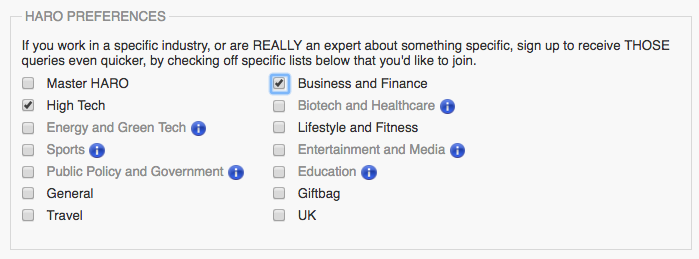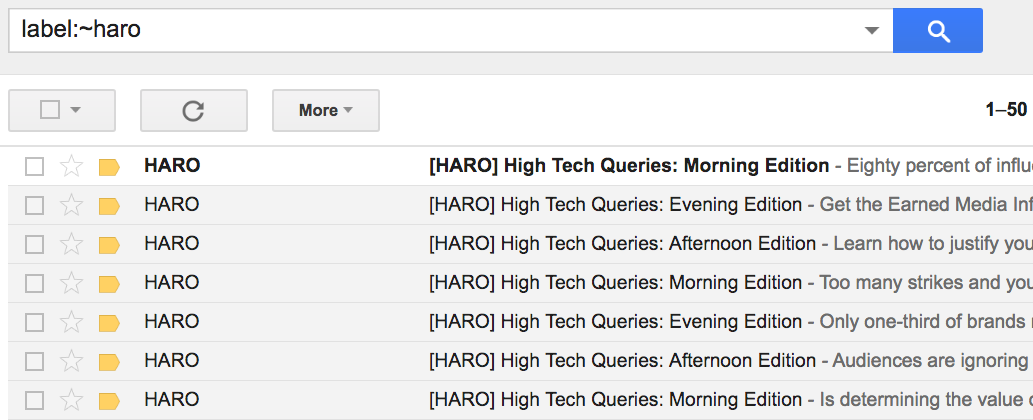Journalists and bloggers are in constant need of relevant, authoritative and timely information.
When a reporter decides to write about a topic, there’s no substitute for getting input from experts on whatever they’re writing about.
As a small business owner or manager, you are, by definition, an expert in your field.
You’re probably also an expert in some of things that are related to your business. For example, you might be highly knowledgable in a facet of business technology or business finance.
How can your expertise get matched up with the needs of a reporter in a way that will benefit both your business and the reporter’s career?
Well, there’s a website called Help a Reporter Out (helpareporter.com) that’s specifically set up to match sources with reporters. And it’s free to you as a source.
As a source, you or one of your staff can keep your eyes out for reporter queries and you can then pitch your ideas on the topic in response.
What are the benefits when you help a reporter out?
1. If you’re featured on a high profile website, you are establishing yourself as a thought leader in your field.
It’s not inconceivable that a “little ol’ business owner” like you can be quoted in a top-tier outlet such as Forbes, Time, Inc., FOXNews.com, Healthline.com or the Wall Street Journal.
You’re more likely to be quoted in a secondary-tier news outlet, but this would still be an outlet that has plenty of authority.
2. Many reporters will link to your website in their article. If there is a link to your website from major media outlet, more people may find your site through online search.
Why? Because authoritative links to your website (a.k.a. backlinks) is one of the signals that the search engines look for when they decide how high to rank your website content in search results.
In other words, an accepted pitch can be good for SEO.
3. Beyond the pure authority benefit of being linked to, potential customers may navigate to your website from the media outlet’s article.
4. You can legitimately display “as featured in” logos of the media outlets you’ve been quoted in on your website. This demonstrates authority to your website visitors.
How do you get started with HARO?
1. Sign up
Select the free option on the HARO subscription page.
2. Fill in the fields
Enter all required company and contact information.
At the top, be sure to check the Account Type “Source”.

Select one or more preferences. You can select ones with blue “i’s”, but those are awaiting more reporter queries before they become active.

3. Monitor your email
For each of your selected preferences, you will get three daily emails. You can route these emails to a label or folder so they don’t clog your inbox.

4. When you find a query that’s in your wheelhouse, respond quickly
Same day deadlines are not uncommon. Regardless of when the deadline is, the faster you respond with your pitch, the more likely you will be to catch a reporter’s attention. If possible, respond within one hour.
5. Make a 200×200 headshot publicly accessible
Some reporters request a headshot, but you cannot attach files to HARO pitches.
Instead, upload a headshot to a location such as WordPress media, Google Drive or Amazon S3 from where you can create and share a public link.
6. Prepare a canned rich signature
Different reporters ask for different types of information. So you don’t have to think about it each time, create a catch-all template of your information and include this at the bottom of all responses. Here is an example:
John Abbott
Business Name: Abbott Wind Energy
Position: Co-founder & President
Phone: 916-555-1212
Website: https://www.abbottwindenergy.com
Headshot: https://www.abbottwindenergy.com/wp-content/uploads/2018/04/john-abbott_200x200.png
LinkedIn: https://www.linkedin.com/in/johnabbott1234
Twitter: https://twitter.com/jhabbott (if you don’t have a Twitter account, consider creating one)
7. Be prepared to be ignored
 Unlike in baseball, you want your pitches to be hit.
Unlike in baseball, you want your pitches to be hit.
In crowded content fields, such as general online marketing or healthcare, your pitches may have a discouragingly low number of hits.
The odds of your HARO pitch getting a hit are higher for more specialized queries such as this one:
“I need to speak w business owners who have raised/plan to raise money under SEC crowdfunding rules.”
Even better is a query that begins with “Still looking for”, such as:
“Still Looking for Medical Practice Marketing Tips”
It’s rare that a reporter will outright reject your pitch, although this is an option they have. Most of the time, if a reporter does not want or need your pitch, they will simply not respond to it.
But keep stepping onto the pitcher’s mound. A good hit could be worth its weight in gold.
HARO Pitching Tips
If you don’t have time to monitor emails, consider delegating the monitoring and even the drafting of pitches. Edit a draft pitch and then send it from your email account.
If you want to delegate the entire pitch, make sure the person you delegate to has their own HARO account.
Sometimes the news outlet is anonymous. Don’t let that stop you from pitching.
Stay on topic and be brief with your pitches.
Follow any of the other HARO rules not mentioned above.
Now, go out there and throw a few HARO pitches down the middle of the plate! See if you can help a reporter out.


 David Little is VP of Sales & Marketing at Fortis, in El Dorado Hills, California. David specializes in helping out small business owners and managers with their network, telephone and internet technologies.
David Little is VP of Sales & Marketing at Fortis, in El Dorado Hills, California. David specializes in helping out small business owners and managers with their network, telephone and internet technologies.